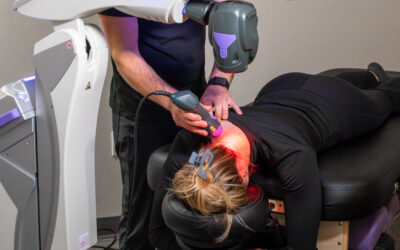 Thoracic Outlet Syndrome (TOS) is a condition that affects the nerves, arteries, and veins in the upper body, leading to pain, numbness, and weakness.
Thoracic Outlet Syndrome (TOS) is a condition that affects the nerves, arteries, and veins in the upper body, leading to pain, numbness, and weakness.
It occurs when the thoracic outlet, a narrow passageway between the collarbone and the first rib, becomes compressed.
While medical interventions are often the go-to solution, chiropractic care, combined with functional rehabilitation, has emerged as an alternative approach that offers effective relief for TOS patients.
In this blog, we will delve into the causes and symptoms of TOS and explore how chiropractic treatments can help alleviate pain and improve overall well-being.
Understanding Thoracic Outlet Syndrome
Thoracic Outlet Syndrome encompasses a range of symptoms caused by the compression of the neurovascular structures passing through the thoracic outlet. The thoracic outlet consists of the space between the collarbone (clavicle), first rib, and the muscles and soft tissues surrounding them.
When this space narrows due to poor posture, trauma, repetitive movements, or anatomical variations, it can lead to compression and subsequent symptoms.
Common symptoms of TOS include pain or aching in the neck, shoulder, and arm, numbness or tingling in the fingers or hand, weakened grip strength, and even discoloration or swelling in severe cases.
These symptoms can significantly impact daily life, making it essential to seek appropriate treatment.
 Chiropractic Care for TOS Relief
Chiropractic Care for TOS Relief
Chiropractic care focuses on the relationship between the spine, nervous system, and overall health. When it comes to TOS, chiropractors employ a holistic approach to alleviate pain, reduce inflammation, restore mobility, and enhance overall well-being.
Here are some key chiropractic techniques that can benefit TOS patients:
Spinal Manipulation:
Chiropractors use gentle spinal adjustments to improve spinal alignment and relieve pressure on the nerves in the neck and upper back. By reducing spinal misalignments (subluxations), they can alleviate TOS symptoms and enhance nerve function.
Soft Tissue Therapy:
Chiropractors may employ soft tissue techniques like Active Release Techniques, Graston therapy, and massage to alleviate muscular tension and improve blood flow in the affected areas. These therapies can help reduce inflammation and promote healing.
Posture Correction:
Poor posture is often a contributing factor to TOS. Chiropractors, such as the Doctors at Tangelo Seattle + Portland, evaluate and address postural imbalances and provide guidance on proper ergonomics and exercises to improve posture.
Correcting postural issues can relieve stress on the thoracic outlet, reducing symptoms.
Stretching and Strengthening with Functional Rehabilitation:
Chiropractors work with Rehab Specialists at Tangelo to design individualized exercise programs that focus on stretching tight muscles and strengthening weak muscles in the neck, shoulder, and upper back regions.
These exercises can enhance stability and promote optimal function of the thoracic outlet.
Lifestyle Modifications:
Chiropractors may offer advice on lifestyle modifications to support TOS recovery.
This can include recommendations for ergonomic changes at work, guidance on maintaining a healthy weight, and strategies for stress management.
Conclusion
Thoracic Outlet Syndrome can be a debilitating condition that affects daily life. While traditional medical interventions are available, chiropractic care offers an alternative approach that can effectively address the root causes of TOS and provide long-term relief.
By employing spinal adjustments, soft tissue therapy, posture correction, exercises, and lifestyle modifications, Chiropractors can help alleviate pain, improve mobility, and enhance overall well-being. If you’re struggling with TOS, consider a consultation with our Doctors at Tangelo.
We have three locations to serve you: Green Lake (Seattle), West Seattle, and in the Slabtown Neighborhood of Portland, Oregon.


